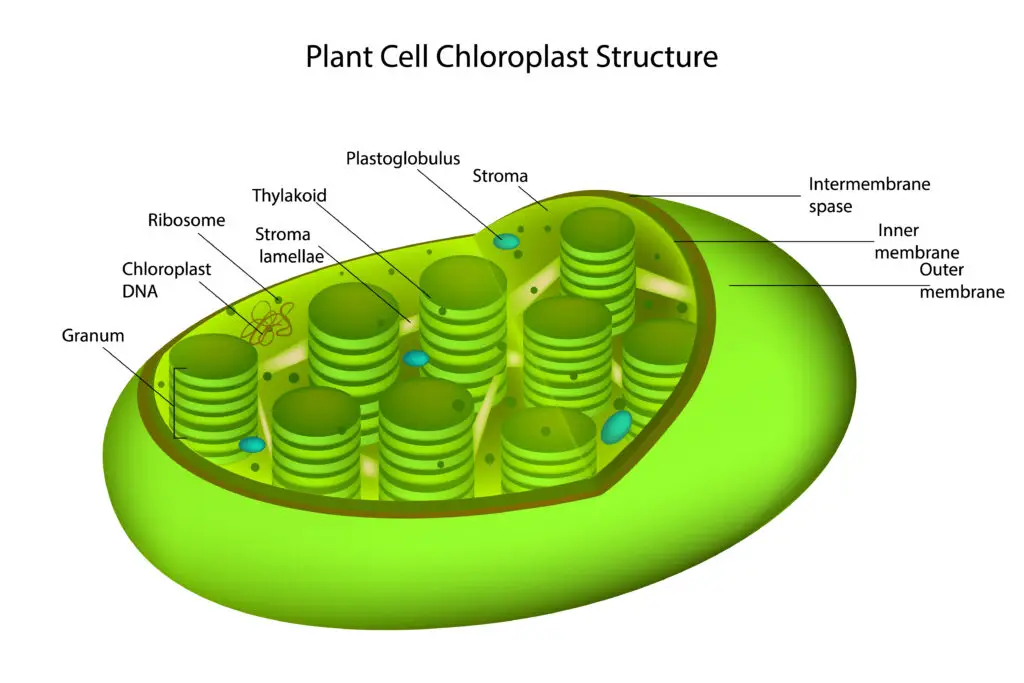Chloroplast
What is Chloroplast?
A chloroplast is an organelle found in plant cells and some algae that conducts photosynthesis, converting sunlight into energy (glucose) for the cell. Chloroplasts contain chlorophyll, the green pigment that captures light energy.
Photosynthesis
Photosynthesis is the process that plants use to make their own food, and it happens in a part of the plant cell called the chloroplast. Chloroplasts contain a green pigment called chlorophyll, which captures energy from sunlight. First, chlorophyll absorbs sunlight, which gives the cell energy to start making food. Then, the plant combines this energy with water and carbon dioxide from the air.
Through photosynthesis, the plant produces glucose, a type of sugar that gives the plant energy to grow and survive. As a bonus, this process releases oxygen, which is essential for animals and humans to breathe. Chloroplasts allow plants to create their own food, which supports not only the plant itself but also the entire food chain, since animals rely on plants for food and oxygen.
Chloroplast Signaling
Chloroplasts do more than just help plants make food; they also play a role in cell communication, called chloroplast signaling. Through signaling, chloroplasts send important messages to the rest of the cell about conditions inside and outside the plant. For example, when a plant gets too much light, chloroplasts detect this and signal the cell to make protective adjustments. This helps the plant avoid damage from the intense sunlight.
In addition, chloroplast signaling helps the cell respond to changes, like low water levels or other stresses. By sending signals, chloroplasts help the cell make adjustments that keep the plant healthy and safe. This system allows plants to survive and adapt to their environment, ensuring they stay strong even when conditions change.
Retrograde Signaling
Retrograde signaling is a way that parts of a cell, like chloroplasts and mitochondria, communicate with the nucleus. In this process, these parts send signals back to the nucleus to tell it what’s happening inside the cell. For example, if a chloroplast detects too much light, it uses retrograde signaling to inform the nucleus. This allows the nucleus to respond by making protective proteins or adjusting cell activities.
Retrograde signaling helps the cell react to changes in its environment, such as changes in light or temperature. By keeping the nucleus updated, the cell can make quick adjustments to stay healthy and safe. This communication is important because it helps plants and other organisms respond better to their surroundings, which helps them survive.
